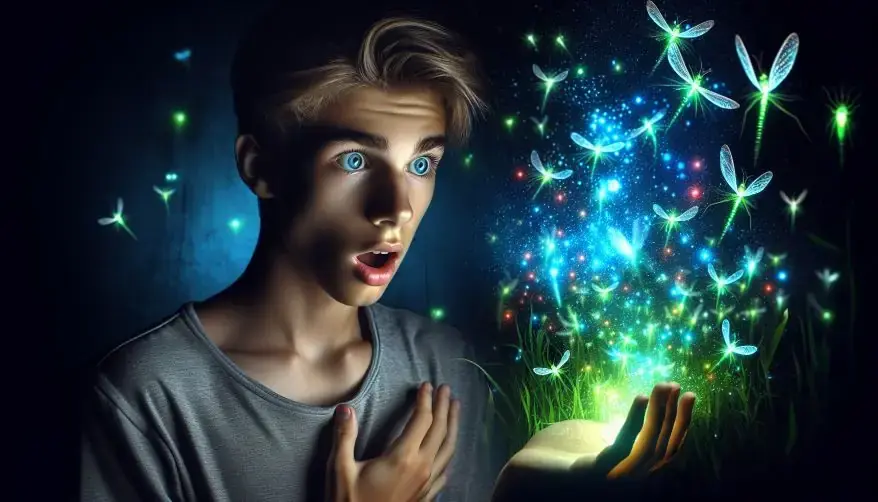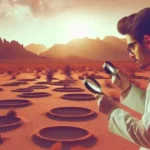Wonders of Bioluminescent Organisms: The Fascinating Natural Phenomenon
Many sea creatures naturally glow, a fascinating phenomenon called bioluminescence. They make beautiful blue, green, and purple light. For instance, Anglerfish, which is a Bioluminescent organism, uses special light-making body parts to light up the water around them. This light helps them find partners, catch food, and stay safe from animals that might eat them.
Furthermore, in the deep ocean, squid and plankton glow. Their light brightens the ocean floor, making it a beautiful place to discover. Also, glowing bacteria live in some places, like on beetle shells or in mushrooms.
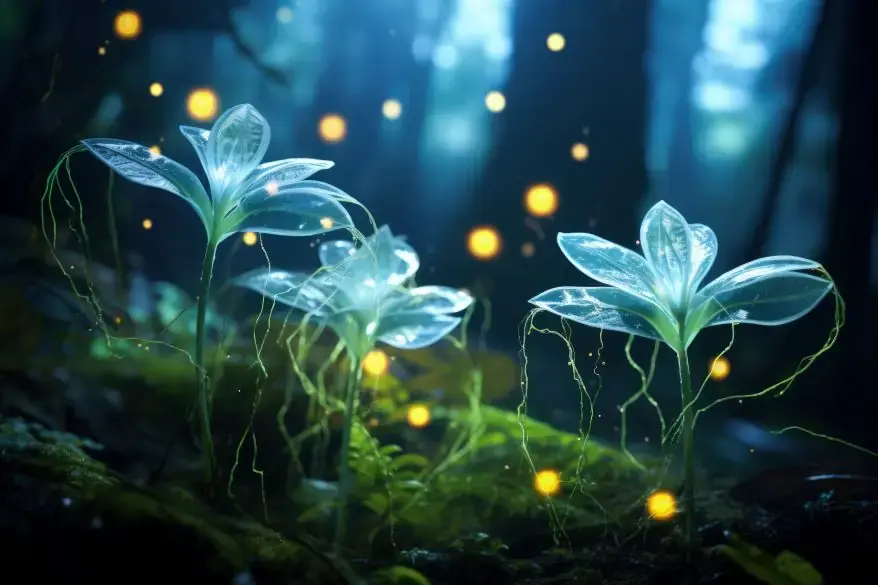
How do bioluminescent organisms produce light?
Some sea animals, like small ones or those in deep places, learned to create their own light. Furthermore, they do this with chemicals that mix together. Thus, this mixing makes light we can see, often blue or green. The light helps some sea animals get food or keep enemies away.
Light is usable to send signals between different types of living things. Also, bioluminescence makes light patterns in the ocean and acts like fluorescence. This change helps living items in important ways, like finding partners.
Living items make light called bioluminescence. Thus, this light glows in the deep ocean where it’s dark. It shows how much life is present. For example, some animals create red light, a striking thing to see in nature.
Chemical reactions involves in bioluminescent organisms
Living things can make and give off light. This happens because of a chemical change inside them. Many animals, such as insects and small fish, now have body parts that can produce light. They can also stop making light. For example, deep-sea animals glow. Their light is usually blue because it works well in the water. They use their light for things like finding partners or scaring enemies.
Also, bioluminescence aids research and medicine, proving it’s more than a survival tool. Over time, new kinds of glowing creatures appeared. They show different brightnesses and colors of light. This amazing skill to make light with chemicals fascinates us. Thus, it helps us understand how living things connect in nature.
Some examples of bioluminescent organisms
Namely, fireflies are amazing bioluminescent creatures. They flash a light to find partners. In the sea, some jellyfish and deep-sea fish make their own light. A special body part helps them to send signals or get away from enemies.
Making light is a fantastic chemical process in animals. Thus, they use certain chemicals and helpers to do it. These actions can make different colors of light. Nature is great at using light for life. The world has many creatures that glow. Fireflies shine on land, and the sea has bright lights. It’s amazing.
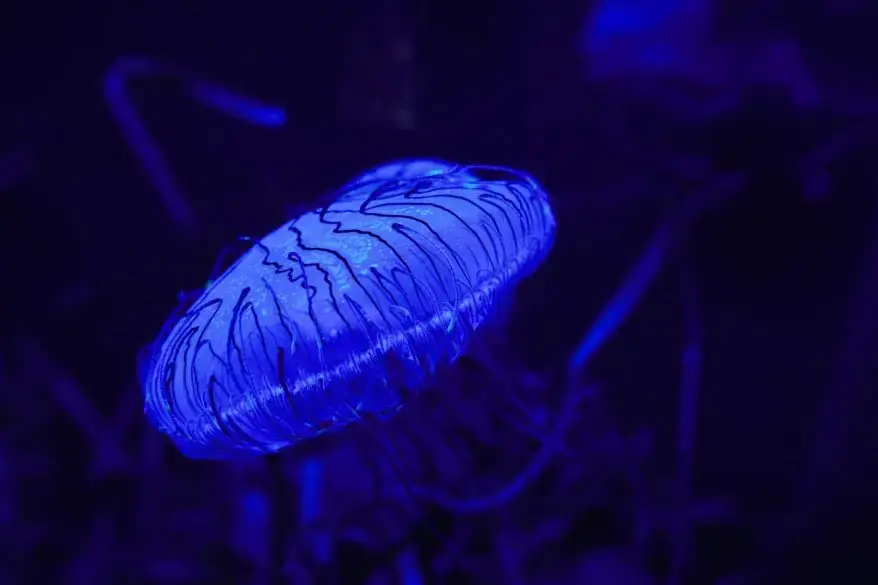
Biology gives you a brain. Life turns it into a mind. Nature teaches its wisdom – Inspired by Carl Jung and the wonders of the natural world.
Biochemical Mechanisms of Bioluminescence
- Luciferin and Luciferase: The light produced in bioluminescent reactions typically involves a small molecule called luciferin and an enzyme known as luciferase. Light appears when luciferin combines with oxygen if ATP is present.
- Variety of Systems: We know of more than 30 light-making systems. The luciferin-luciferase setup gets the most attention. Different luciferin-luciferase pairs give off light in different colors, so they work well for many uses.
How do fireflies exhibit bioluminescence?
Fireflies are bugs that make their own light. They use this light to talk to each other, mostly when they are looking for a partner. This light is made in special cells in their bodies. Fireflies flash their light to get the attention of other fireflies in the dark. Other things like mushrooms and fish also use light in nature.
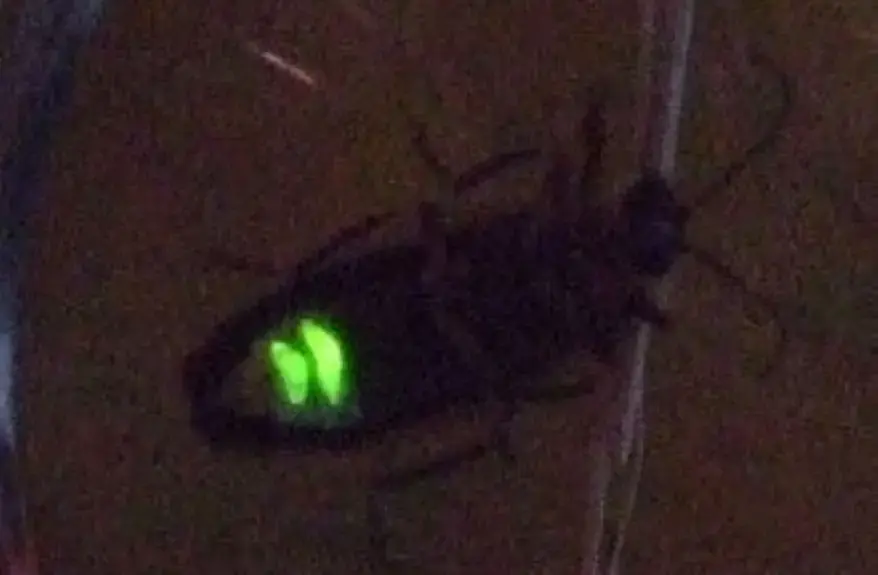
Fascinating facts
- It’s Nature’s Glow Stick!– Living things can make and send out light. This is like a glowing stick that uses chemicals for power. It works because a light-making bit, luciferin, and a helper bit, luciferase, act together.
- Most Common in the Ocean – About 80% of bioluminescent organisms live in the deep sea, where sunlight doesn’t reach. These include jellyfish, deep-sea fish, squid, and plankton. Lanternfish that use light to blend into light filtering from above. Anglerfish have a glowing lure to attract prey in pitch-dark waters.
- It Has Many Survival purposes: Bioluminescence is more than just a pretty glow—it’s a survival strategy. Attracting Mates: Fireflies use flash patterns to signal potential mates. Defense Mechanism: Some squid and shrimp eject glowing fluids to distract predators. Hunting: Deep-sea fish use their light as bait. Camouflage: Some fish shine light from their undersides. Thus, the light looks like the light from above. This helps them hide from animals that want to eat them from below. We call this hiding trick “counter-illumination.”
- Humans Use It in Science and Medicine– Glowing light in living things is neat, but it also helps a lot with biology. Scientists put glowing genes into other cells or living things to watch how genes act. Thus, they do this when studying cancer, making new medicines, and making plants that glow. It helps them find pollution, check how healthy cells are, and do other things.
- Some Organisms Glow Together: In places like bioluminescent organism bays (e.g., in Puerto Rico), the water glows when moved. Namely, tiny sea creatures (dinoflagellates) make this happen. They glow blue when something moves them. This makes the water’s surface look like it’s sparkling with blue light.
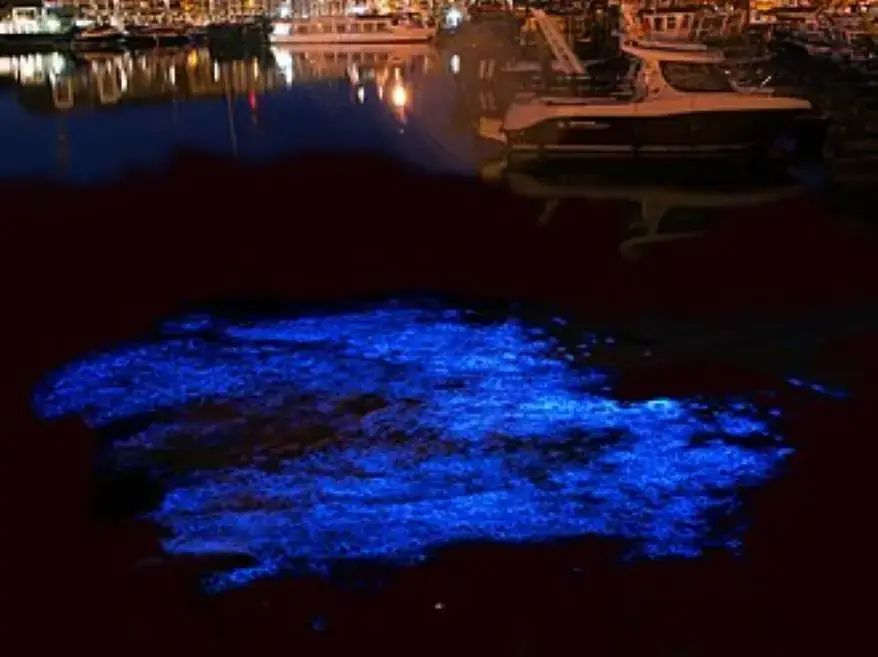
Not All Bioluminescence Looks the Same
Different organisms emit different colors of light, depending on their environment and purpose. Deep-sea creatures mostly glow blue or green because these wavelengths travel best in water. Land organisms like fireflies may glow yellow or red.
Fungal Bioluminescence
Fungi offer a simple bioluminescent system for bioimaging. Researchers found the light-making substance and the helpers that build a fungal light source. Thus, this opens chances to make living things glow on their own.
Look deep into nature, and then you will understand everything better — Albert Einstein
Ecological and Evolutionary Insights
- Defense and Communication: Many shiny animals use light to keep safe, get food, or signal when they want a mate. This change proves that creating light helps them live longer.
- Evolutionary Mysteries: We now know more about how animals make light. We don’t know everything about how some of these things started or why they exist. We still have a lot to discover.
Conclusion
Living items make light with chemicals. This is a fascinating phenomenon in nature. Also, this light is largely seen in animals that live deep in the sea. But you can also find it in land animals, such as fireflies and mushrooms. To sum up, the light helps them in different ways. Like talking to each other, hunting, hiding, and staying safe. This natural light does not make heat. It is a wonderful matter that has changed over time and is very useful for science and technology.
References
- Valiadi, M., & Iglesias-Rodriguez, D. (2013b). Understanding bioluminescence in Dinoflagellates—How far have we come? Microorganisms, 1(1), 3–25. https://doi.org/10.3390/microorganisms1010003
- Letendre, F., Twardowski, M., Blackburn, A., Poulin, C., & Latz, M. I. (2024). A review of mechanically stimulated bioluminescence of marine plankton and its applications. Frontiers in Marine Science, 10. https://doi.org/10.3389/fmars.2023.1299602
Additionally, to stay updated with the latest developments in STEM research, visit ENTECH Online. Basically, this is our digital magazine for science, technology, engineering, and mathematics. Further, at ENTECH Online, you’ll find a wealth of information.
